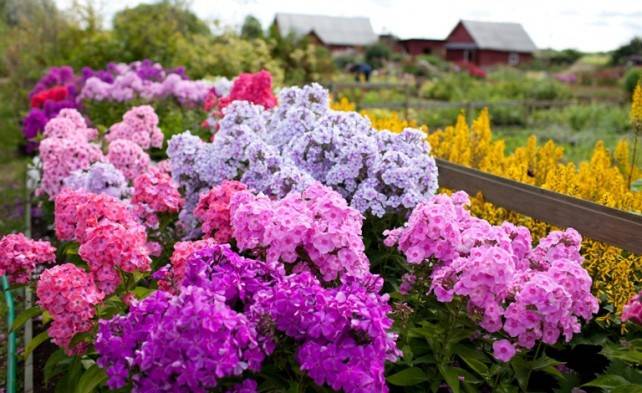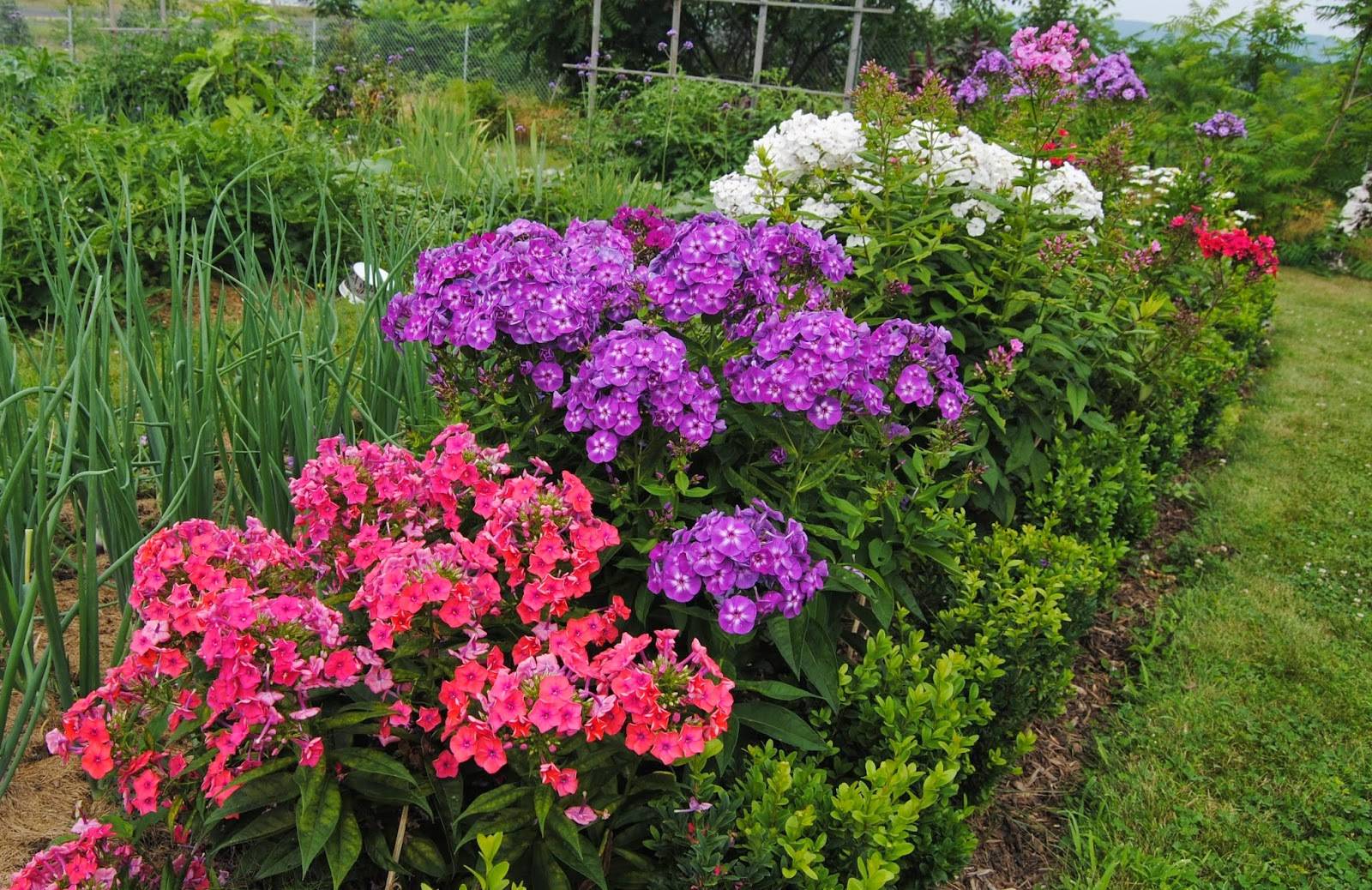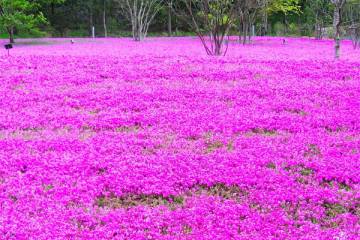Phlox paniculata: varieties, planting and care
Content:
Phlox means flame. And indeed, walking through the gardens and vegetable gardens, as well as not far from summer cottages and backyards, you can see bright flashes of rich and varied shades of these colors. Phlox is one of the most common plants used to decorate flower gardens and adjoining areas. It is chosen for its unpretentiousness, frost resistance, bright long flowering and magical aroma.
Description of the species
The difference between phlox paniculata from other varieties of this plant is that there is no pigment in the varieties that gives the flowers a yellow tint. The color of the variety ranges from white, light blue and pale pink to rich crimson, bright red or purple.
This variety also differs in structure. Paniculate phlox grow in height from 0.5 to 1.5 m. They have a high, straight stem, the top of which is decorated with inflorescences. Up to 12-15 buds can be collected on one plant. The flower petals are even or torn. One bud has 5 petals. The leaves are elongated with smooth edges and a pointed tip. They are located perpendicular to the trunk, usually 4 pieces. on the same level.
Varieties of paniculate phlox
In 2019, there are about 1000 varieties in the world. More than 200 of them belong to the paniculate species. Sometimes phlox chameleon is found, because the color of flowers depends on how the light falls on the petals. The names of the most popular varieties:
- America;
- Snow White;
- Blue Paradise;
- Diamond Feis;
- Gerriford;
- Gzhel;
- Blue Boy;
- Green Lady;
- Graf Zeppelin;
- David;
- Delta;
- Cool Water;
- Genius;
- Europe;
- Droplet;
- Orange Peppermint;
- Orange Perfection;
- Twist;
- Tiara;
- Lizzie;
- Picasso;
- Pina colada.
Phlox panicled variegated
Phlox Paniculata Variegata is the Latin name for flowers that have not only outstanding shades of inflorescences, but also the leaves themselves. According to the description, a border is formed on the foliage of a plant of this species. It can be darker or lighter than the main sheet and of various widths. The edges of the border are not even, pointed smudges rush to the center of the leaf. The color of flowers in these varieties is not very diverse. The variegated phlox of paniculate is valued precisely for the color of the leaves.
Phlox paniculata in landscape design
Phlox is one of the most versatile colors. It fits with equal ease into a hedge, rock garden or near a decorative pond. With respect it will take a place in a flower bed or help to zone the territory of the site.
These flowers look great alone and also blend with other plants. You can combine colors to create a specific composition that will delight the eye every year. Can be combined with other plants, for example, according to the flowering period. There are many methods of drawing up a flower arrangement, it all depends on imagination.
Reproduction
Perennial paniculate phloxes reproduce quite simply.To do this, you can use 4 methods of preparing a new planting material. The simplest ones are grafting and dividing the rhizome. Also, the method of dropping is not difficult, but in this case, the plant is not recommended to be transplanted to another place. Phlox seedlings can also be purchased at the nursery.
Cuttings
Cutting is best done in early summer, before the plant has bloomed. To prepare the cuttings, you need to choose a young and juicy shoot. You need to cut at an acute angle at a height of 2-3 cm from the ground. Cut off the top of the shoot and remove the leaves.
Next, you should leave the twig to soak for several hours in the root solution. After that, the cutting should be placed in the prepared nutrient soil to a depth of 5 cm, moistened and covered with a glass or plastic cap. After about 30 days, phloxes take root and can be replanted to their planned location.
Rhizome division
The optimal time for phlox reproduction by dividing the root system is autumn or early spring. To do this, the bush must be carefully poured in without damaging the root system, and divided into several parts. Each lobe should contain 2-3 strong adult shoots. After complete separation, phlox can be planted in open ground.
Digging in layers
This method is ideal if you want to enlarge the shrub in diameter and make it lush. For digging, a young shoot is selected, pressed to the ground and covered with a layer of nutrient soil. By the end of summer, an independent shoot grows from the cut.
Place and soil
Phloxes love good lighting and do not tolerate drafts. The plant feels good anywhere on the site, but it will delight the most lush flowering if the sun hits it well in the morning, and the rest of the time the light is diffused. Light shading is necessary so that the flower does not get sunburn and does not lose the brightness of the bloom.
The soil for the flower needs moist and nutritious. Groundwater should not be allowed to accumulate at the root system. If the soil is marshy, it is better to provide drainage before planting.
Landing
To plant paniculata phlox, you need to prepare a hole. It should not be made too deep, it is necessary that the root system 18-20 cm in size fits freely. It is better to make the hole wider, as the bush grows. 50-70 cm is enough, and after a few years phlox will not leave any free space.
It can be planted in the fall at the end of the gardening season or in early spring. If the planting takes place in the spring months, then it is necessary to add mineral and organic fertilizers to the hole. Seedlings should be placed in the hole carefully so as not to harm the roots. The best way to do this is by using an earthen ball transfer along with the root system.
Care
In order for the plant to please with its lush and abundant flowering, it must be properly looked after. These flowers are not too whimsical, therefore they do not need daily supervision, it is enough to adhere to the general rules.
Pruning and garter
Pruning phlox at the end of the summer season is considered mandatory. Plants that bloom early in early summer are pruned in late August or early September. Late flowering plants are pruned in October before the frost begins. In autumn pruning, all shoots are completely removed almost to the ground. Only 10 cm should be left outside.
How to prepare a plant for wintering
In order for the plant to survive the winter safely, you can cover the roots with peat. The plant is winter-hardy and, thanks to pruning, does not need a separate covering material. However, care should be taken to ensure that the roots of the plant are not exposed. You can also add a small amount of mineral, organic fertilizers and a little ash before wintering. You also need to make sure that there is no accumulation of moisture in the roots, otherwise they will freeze.
Diseases and pests
Phloxes rarely get sick or attacked by insects. Sometimes they are affected by powdery mildew or variegated fungi. To get rid of these problems, you should treat the plant with a metaphos solution.
Phlox is a versatile flower that pleases with its elegance and splendor. The sweetish smell of a summer meadow, bright colors and juicy green leaves will decorate any summer cottage with a minimum amount of material and energy costs.




















